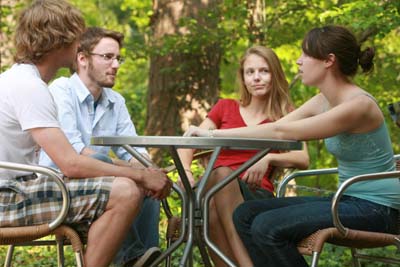Green Fees
Students put their gold where their green is.
 This year, members of William and Mary's Student Environmental
Action Coalition (SEAC) created a new plan for furthering environmental
reform on campus: the introduction of a student Green Fee. By adding
fifteen dollars to each semester's general fee, the proposal allows for
facilities upgrades, student research grants for sustainability-related
projects, and the creation of a green endowment to fund future
environmental actions.
This year, members of William and Mary's Student Environmental
Action Coalition (SEAC) created a new plan for furthering environmental
reform on campus: the introduction of a student Green Fee. By adding
fifteen dollars to each semester's general fee, the proposal allows for
facilities upgrades, student research grants for sustainability-related
projects, and the creation of a green endowment to fund future
environmental actions.
In February, SEAC issued a student survey to gauge student support for a fee increase to support sustainability. After receiving 85% positive results, SEAC sent the green fee proposal to the necessary administrators, its writers gathering advice and technical expertise along the way. An official student referendum in March received the same results as the survey (to the tenth of a point!) and the proposal moved on to the Board of Visitors. Vocal support from President Reveley and VP of Finance Sam Jones give us great hope for the proposal's success at the Board of Visitors meeting in May.
If implemented, more than half of the fund will go directly into facilities upgrades, beginning with the most basic: electricity and BTU meters around campus to establish a baseline of energy use for College buildings. Future projects may include helping build green roofs and bringing renewable energy sources to campus. Additionally, the Charles Center will award student grants for campus improvement research projects. Perhaps most important to the continued success of the sustainability movement on campus is the establishment of a green endowment. Invested in green-minded and environmentally responsible mutual funds, the endowment will provide the College with additional money as the projects become more and more expensive.
This initiative comes at a great time for the College and the ENSP program: with over 70 proposals from the Campus Sustainability course available, the new Committee on Sustainability (to begin meeting in the fall) has an excellent resource for deciding where to place these new funds, and student and faculty support for sustainability has never been higher. We in SEAC would like to thank everyone in the department, and all members of the College community who have helped us develop this plan, and we hope to work with you again in the near future.
William and Mary's chapter of SEAC is online at: http://seac.blogs.wm.edu.
by Phillip Zapfel '09














